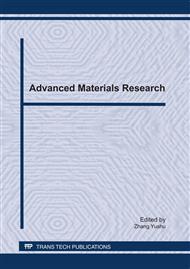p.291
p.297
p.302
p.306
p.311
p.315
p.320
p.325
p.330
The Influence of Air Humidity on Fatigue Properties of an AA2524-T34 Aluminum Alloy
Abstract:
Self-aligning four-point bend fatigue tests were conducted to investigate the influence of humid air on the fatigue behavior of an AA2524-T34 Al alloy. Test specimens of the alloy along the rolling direction was cycled at room temperature and frequency of 15 Hz, tension-tension loading(R = 0.1), in 15% relative humidity (RH) and 95% RH up to 107 cycles to failure. The S-N data shows continuous reduction tendency. It was found that with the increase of test relative humidity, the fatigue properties of the alloy is decreased, the fatigue limit in 95% RH was nearly 20% reduction of that in 15% RH, only 67% of its yield strength. Meanwhile, the S-N data is much more scattered than it in lower relative humidity. In 15% and 95% RH, cracks were initiated predominantly at coarse particles but partly at grain boundaries on the surface in 95%RH. SEM results show the characteristics of intergranular fracture in high humidity circumstance.
Info:
Periodical:
Pages:
311-314
Citation:
Online since:
February 2011
Authors:
Price:
Сopyright:
© 2011 Trans Tech Publications Ltd. All Rights Reserved
Share:
Citation:


